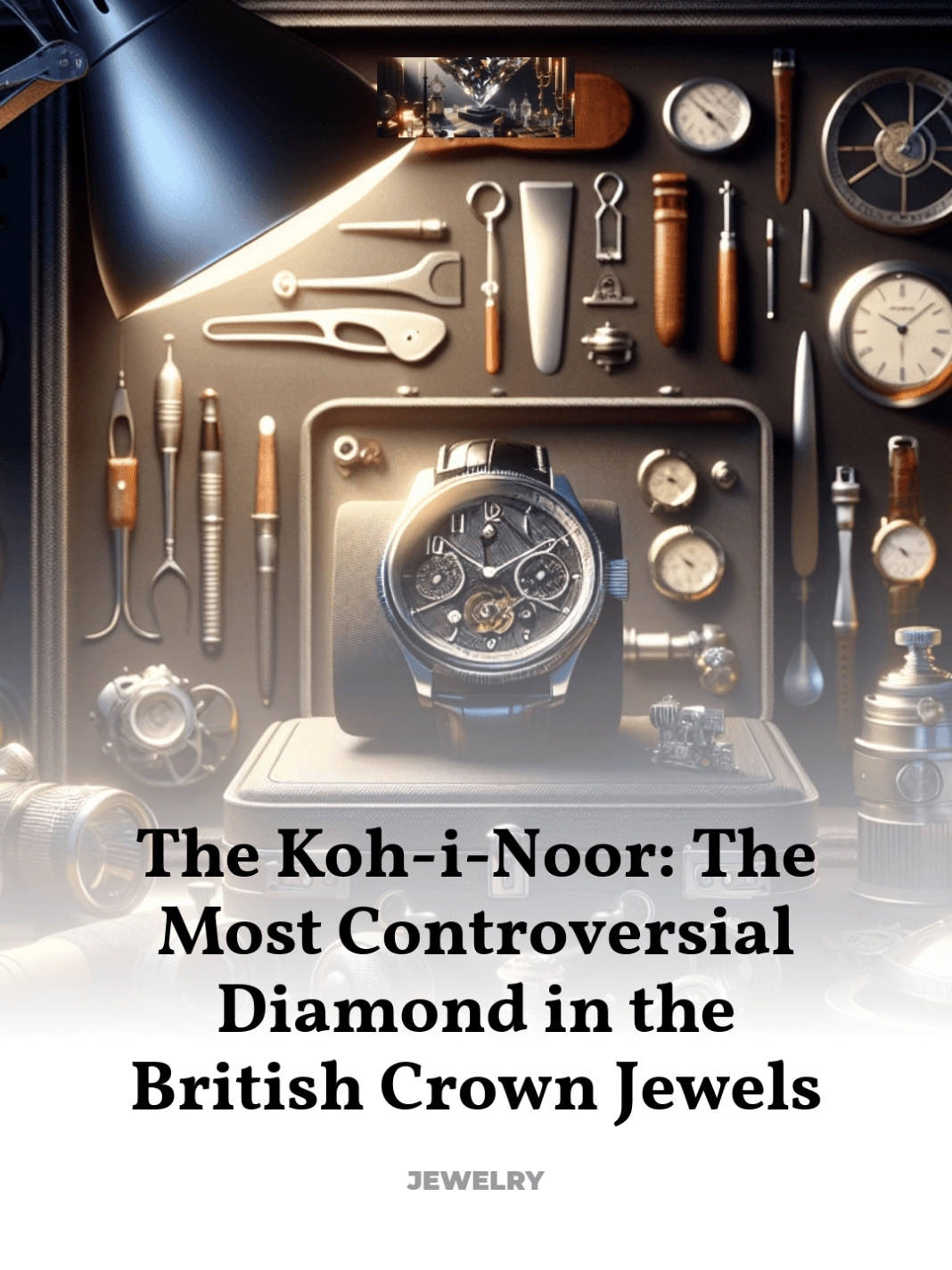The mysterious journey of one of the world’s largest diamonds
The Koh-i-Noor diamond, a gem of breathtaking beauty and staggering controversy, has journeyed through history, leaving a trail of intrigue and dispute in its wake. This diamond is not just a luxurious artifact; it is a profound symbol of craftsmanship, heritage, and the complex legacies of the empires that once coveted its brilliance.
- The Enigmatic Origins of the Koh-i-Noor
- A Journey Through Empires: The Path of the Koh-i-Noor
- The Koh-i-Noor in the British Crown Jewels
- Controversies and Claims: The Global Dispute Over the Koh-i-Noor
- Cultural and Artistic Significance of the Koh-i-Noor
- Reflecting on the Legacy of the Koh-i-Noor
The Enigmatic Origins of the Koh-i-Noor
The exact origins of the Koh-i-Noor diamond remain shrouded in mystery, with its story beginning in the rich alluvial mines of India, possibly as early as the 13th century. Historical records from India mention a diamond of great size and brilliance, often associated with various rulers who saw the gem as a symbol of authority and divine favor.
Legend has it that the diamond was originally over 190 carats when uncut, its pristine clarity and sheer size making it a coveted treasure among monarchs. The name ‘Koh-i-Noor,’ which means ‘Mountain of Light’ in Persian, reflects its status among the great historical diamonds of the world.
Historical Mentions and Mythology
- The earliest reliable records describe the diamond as part of the spoils of war, possessed by the Kakatiya dynasty in the 13th century.
- It is believed that the Koh-i-Noor was set in the famous Peacock Throne of the Mughal Emperor Shah Jahan, maker of the Taj Mahal.
- Myths surrounding the diamond often speak of a curse, purportedly affecting male rulers who owned it, leading many to believe that only female members of a royal family should wear it.
A Journey Through Empires: The Path of the Koh-i-Noor
The history of the Koh-i-Noor is a saga of conquest and royal ambition. From the Mughal emperors of India to the Persian warriors under Nadir Shah, and eventually the Sikh rulers of Punjab, the diamond changed hands multiple times, each owner adding to its legend.
It was during the Sikh Empire in the early 19th century that the diamond reached perhaps its most famous bearer, Maharaja Ranjit Singh. Upon his death in 1839, the political instability that followed resulted in the annexation of Punjab by the British East India Company, and the diamond was ceded to Queen Victoria in 1849 under the Treaty of Lahore.
Transformation and Transportation
- Upon arriving in Britain, the diamond weighed about 186 carats. It was recut in 1852, reducing its size to 105 carats to increase its brilliance under the direction of Prince Albert.
- The cutting process was followed with great interest and marked a significant moment in the gemological history of Europe.
The Koh-i-Noor in the British Crown Jewels
Since its incorporation into the British Crown Jewels during the reign of Queen Victoria, the Koh-i-Noor has adorned the crowns of several queens consort. It is currently set in the crown of Queen Elizabeth The Queen Mother, displayed in the Tower of London.
The setting of the diamond in the crown symbolizes not only its undeniable beauty but also the complex history of colonial acquisition. Its presence in the crown jewels is a constant reminder of the British Empire’s expansive reach and its lasting impact on the nations within its orbit.
Public Display and Protection
- The crown containing the Koh-i-Noor is a popular exhibit at the Tower of London, where it attracts millions of visitors each year.
- Due to its immense value and historical significance, the diamond is protected by extensive security measures.
Controversies and Claims: The Global Dispute Over the Koh-i-Noor
The ownership of the Koh-i-Noor remains a contentious issue, with multiple countries including India, Pakistan, Iran, and Afghanistan staking historical claims to the diamond. These disputes often reflect deeper tensions regarding colonial history and the return of cultural artifacts.
Despite these controversies, the British government maintains that the diamond was obtained legally under the terms of the Treaty of Lahore. This stance, however, does not satisfy those who see the diamond’s acquisition as a symbol of colonial exploitation.
Legal and Ethical Debates
- Arguments over the diamond’s return involve legal interpretations of international law concerning war spoils and cultural restitution.
- The ethical debate surrounding the Koh-i-Noor is part of a larger discourse on the repatriation of cultural heritage items taken during colonial times.
Cultural and Artistic Significance of the Koh-i-Noor
The Koh-i-Noor is not only a jewel of immense value but also a powerful cultural symbol. Its story has been interpreted in various artworks, literature, and media, reflecting its multifaceted legacy across different cultures.
In art, the diamond has been depicted in numerous royal portraits, and it continues to inspire contemporary artists and designers who are captivated by its history and mystique.
Influence in Literature and Media
- The diamond’s dramatic past and the legends surrounding it have made it a popular subject in novels and films, often depicted as a coveted and cursed gem.
- Documentaries and exhibitions about the Koh-i-Noor offer insights into its historical journey and the geopolitical forces that shaped its destiny.
Reflecting on the Legacy of the Koh-i-Noor
The Koh-i-Noor diamond remains a fascinating testament to the complexities of history, embodying both the grandeur of ancient artistry and the painful legacies of the past. Its story invites reflection on the meanings of heritage and ownership, urging contemporary societies to reconsider how history’s treasures are held and displayed.
As we continue to admire its beauty, the Koh-i-Noor also challenges us to think critically about the paths by which such treasures have come into modern hands and what responsibilities come with them.
For further reading on the Koh-i-Noor and its historical context, explore authoritative sources such as the British Museum’s collection or the extensive archives at The Royal Household’s official website.



